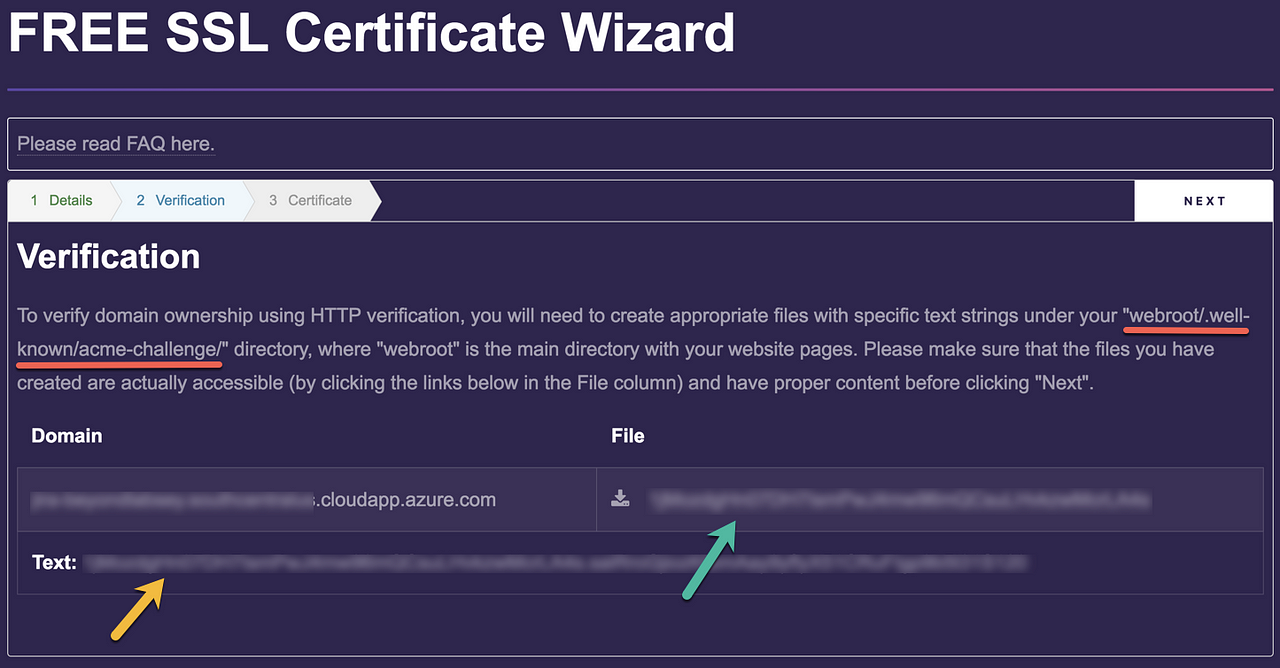
This could be a major pain, as you’ll be assigned a new IP address etc, and in my experiments it’ll take around 30 minutes for your site to appear on line again, as the CName record seems to take a while to catch up to the new IP address. If the solution you’re running only has the standard http endpoint you’ll have to delete the running live instance to swap in the package with the additional 443 endpoint. The final gotcha to be aware of, is that you can’t VIP Swap a project that has more endpoints than the one you’re attempting to replace. crt should now also be available to your Azure cloud project within Visual Studio and again can be imported, as outlined by SondreB. crt successfully imported, you can export it in.
#Azure cloudapp ssl Pc
crt into your certificate store on your local PC (nb – ensure you run as admin or you won’t be able to import the cert).

#Azure cloudapp ssl download
Download the DigiCertUtil.exe and run it.
#Azure cloudapp ssl free
Luckily, however, there’s a free tool that did. Gotcha #2 – SondreB states in the blog you can right-click the. Copy it out of the email and paste it into a new file, ensuring you give it a. The email from Verisign will contain another cryptographic key.

Complete the process and you’ll be emailed your certificate shortly afterwards. Ensure you select Microsoft and IIS7 in the Platform details section, then paste in your Certificate Request key. You can purchase a real one once you are happy you’ve got everything worked out.Ĭomplete the contact form, then you’ll be invited to input your Certificate Request. Which is great, as if like me, you’ll probably create one or two before you get the process down. Verisign have a great free service to allow you to create multiple temporary SSL certificate which lasts for 30 days. txt file you’ll see it contains a Certificate Request cryptographic key. Complete the wizard as SondreB advises and save the. In the left hand side you should have the option to Create Certificate Request. Open IIS7 locally and double-click Server Certificates. However, when working with Azure do all SSL work on your dev PC that has both Visual Studio and IIS7 installed. So if you were working with on-prem IIS you’d generate the Certificate Request from the IIS server that you’re planning to host the app on. Gotcha #1 – you have to create the Certificate Request from the same PC that you plan to generate the. These are both valid X.509 formats but you need to convert the cert you receive from Verisign to a format readily understood by Azure. However, when you request a SSL from an authority like Verisign, it comes in.

pfxįirst off Azure expects to work with SSL certificates that are saved in the. This is a great guide and I urge you to follow it, however, as an SSL amateur I found it had a couple of gaps. I found a great post by SondreB – Windows Azure: Secure Site with SSL certificate. You are hereīefore I started, naturally, and as usual, I hit Google to find all Azure SSL wisdom.

Never having worked with SSL before I thought I’d quickly blog about a few of the gotcha’s I experienced along the way. Recently I’ve had cause to set-up a SSL secu red site on Windows Azure.


 0 kommentar(er)
0 kommentar(er)
